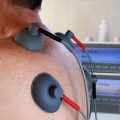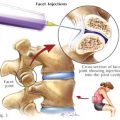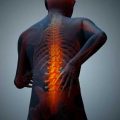We all experience disc degeneration disease as we get older except some exceptional cases where it may appear during late teenage years. This may come in due to some factors such as injuries, surgery, trauma, or inheritance. Degenerative disc pain is easily manageable with non-surgical care or treatments and degenerative disk disease surgery is rarely recommended unless an individual does not improve with conservative treatments. Furthermore, it is considered if he or she is found to have disc instability. Its main aim is to eliminate the movement of the painful part and restore the spinal nerves. Before opting for surgery you will need to speak with your doctor so that they can give you a well-informed advice.
Surgical procedures have their own pros and cons but despite all these, experiments and clinical trials are carried out in an ongoing basis so as to find better ways of delivering the safest and most efficient surgical procedures. Surgery can only be the ideal option for people who experience ongoing severe pain coupled with associated symptoms such as numbness, sitting problems, and tingling. In such cases it is almost impossible to wait for non-surgical treatments to work. Patients will either opt for fusion surgery or the artificial disc replacement surgery.
Requirements for Degenerative disk disease surgery
- The patient experiences severe or chronic pain and it does not respond to recommended levels of medications or treatment.
- There is a serious impact on the patient’s ability to function or carry out their daily activities. To even validate this, a test called “the every day test” is carried out. This will help the doctors when giving advice on whether the surgery is necessary or not.
Once the decision to go for the surgery has been arrived at, the doctors will determine which surgery to undertake; whether fusion or any other type of surgery.
The benefits of Surgery
- Surgery identifies the specific cause of the pain and treats it by removing the disc. This is totally different compared to non-surgical treatments where the focus is on pain management and improvement of back functionality. With surgery the degenerated disc is removed and hence the disorder is reversed.
- With advancement in modern technology better surgical techniques and devices are being discovered. This has a positive impact on the procedure outcomes. The surgical procedures are now more effective and safe thanks to the inventions of better bone harvesting techniques, less invasive fusion procedures, bone graft substitutes, and artificial discs.
Types of degenerated disc surgical procedures
There are normally two types of surgeries that help correct DDD;
1. Artificial disc replacement
2. Lumbar fusion.
- Lumber fusion-is mainly aimed at stopping or stabilizing the movement of the part of vertebral column where the degenerated disc exist. This procedure involves accessing the affected area via the back or the stomach using an incision. Accessing the vertebral column either way requires moving of ligaments and muscles. The procedure also involves the insertion of hardware along with spacers, an interbody cage, or structural bone graft. The bone graft facilitates fusion between the vertebrae.
This surgical procedure makes use of body’s fracture-healing capability. It allows the bone to grow across the area affected by the disc degeneration. Bone graft used in this procedure can be sourced from the patient’s pelvis, synthetic bone, or from a bone bank.
- The Artificial Disc Replacement/Total Disc Replacement-this is the latest surgical procedure for degenerated disc disease and is more complex compared to fusion. It mainly entails the following;
- An incision via the lower abdominal wall so as to access the affected vertebral section.
- Dissection of the belly muscles usually referred to as “six-pack”.
- Performing corrective action behind the bag of abdominal content with no disturbance to their normal functions.
- Degenerated disc removal.
- Restoration of collapsed disk height.
- Correction of the contracted ligaments around the disc.
- Artificial disc insertion to the affected part or segment where degenerated disc was removed.
Summary
Patients who have suffered immensely due to the effects of degenerated disc disease and found no solution in conservative treatments should seek advice before going for a Degenerative disk disease surgery. Both lumbar fusion and artificial disc replacement have their associated risks and disadvantages. Therefore, it is prudent for every patient to consider these disadvantages and risks before going for any surgery.






 I love to write medical education books. My books are written for everyone in an easy to read and understandable style.
I love to write medical education books. My books are written for everyone in an easy to read and understandable style.